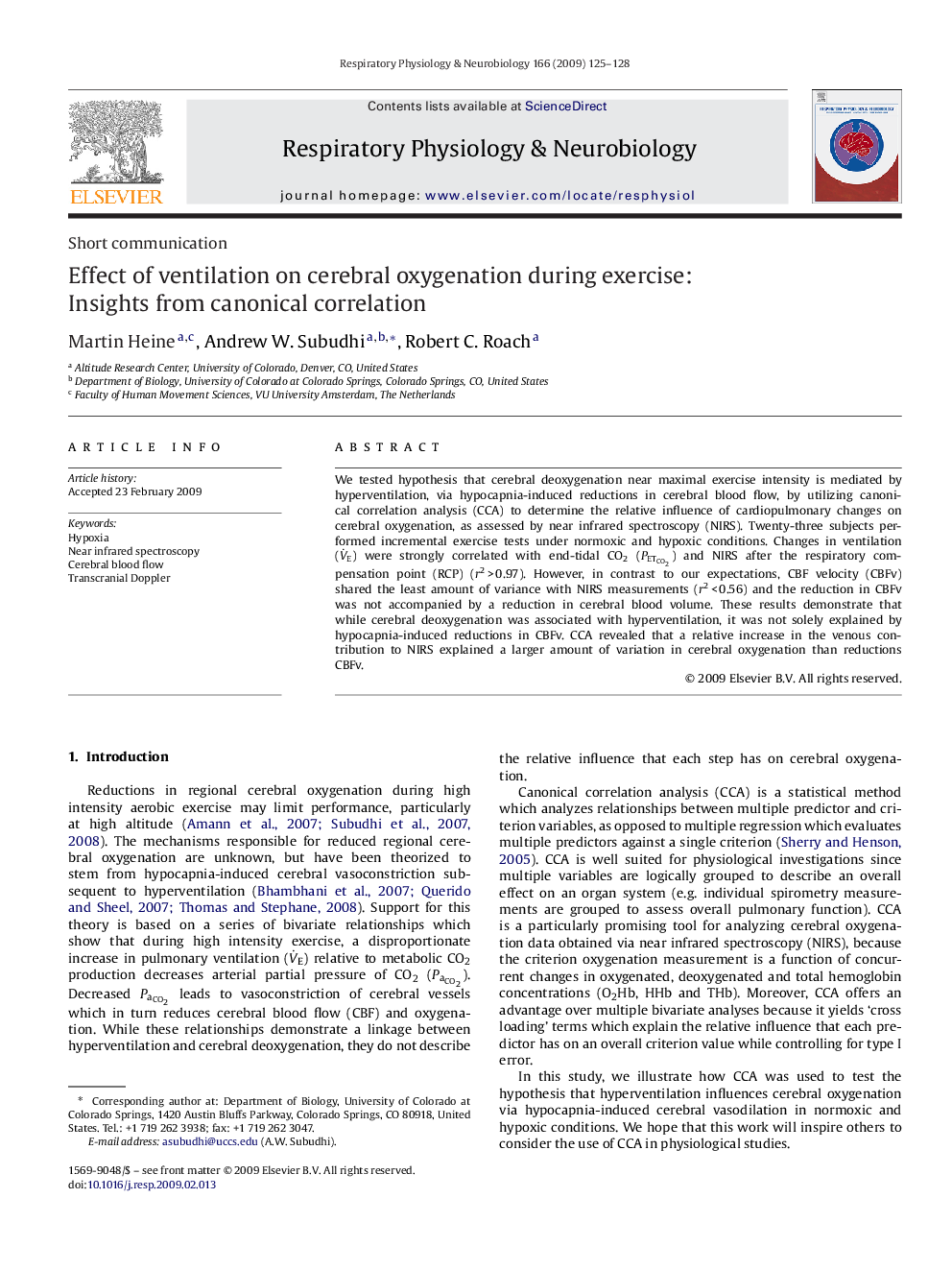| Article ID | Journal | Published Year | Pages | File Type |
|---|---|---|---|---|
| 2848065 | Respiratory Physiology & Neurobiology | 2009 | 4 Pages |
We tested hypothesis that cerebral deoxygenation near maximal exercise intensity is mediated by hyperventilation, via hypocapnia-induced reductions in cerebral blood flow, by utilizing canonical correlation analysis (CCA) to determine the relative influence of cardiopulmonary changes on cerebral oxygenation, as assessed by near infrared spectroscopy (NIRS). Twenty-three subjects performed incremental exercise tests under normoxic and hypoxic conditions. Changes in ventilation (V˙E) were strongly correlated with end-tidal CO2 (PETCO2PETCO2) and NIRS after the respiratory compensation point (RCP) (r2 > 0.97). However, in contrast to our expectations, CBF velocity (CBFv) shared the least amount of variance with NIRS measurements (r2 < 0.56) and the reduction in CBFv was not accompanied by a reduction in cerebral blood volume. These results demonstrate that while cerebral deoxygenation was associated with hyperventilation, it was not solely explained by hypocapnia-induced reductions in CBFv. CCA revealed that a relative increase in the venous contribution to NIRS explained a larger amount of variation in cerebral oxygenation than reductions CBFv.
